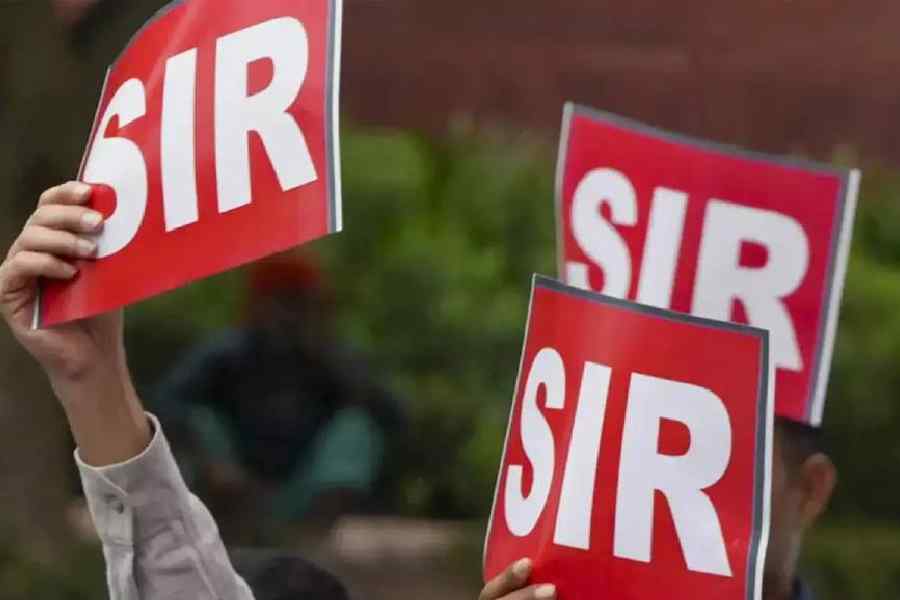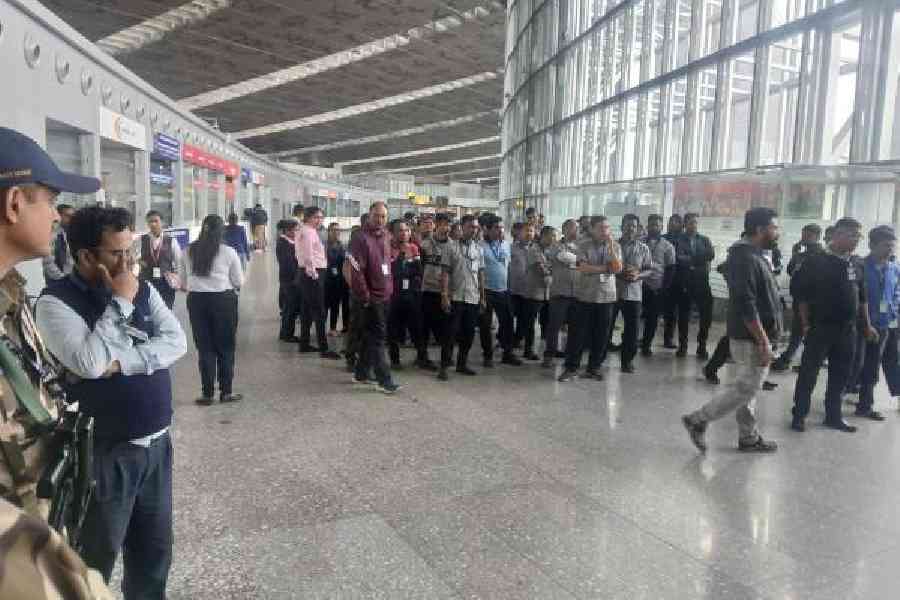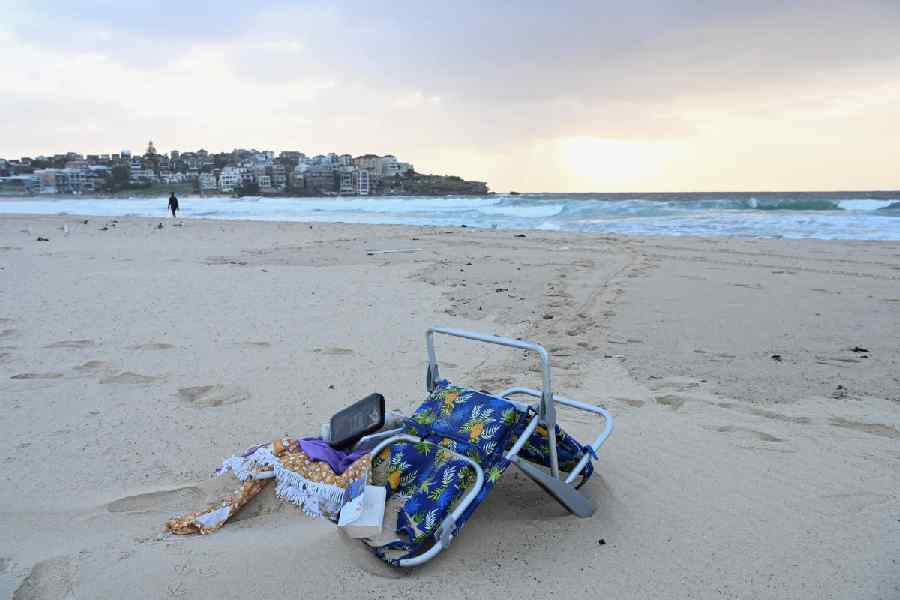 |
For Kala, a Sri Lankan Tamil refugee, life had settled into an unvarying rhythm. Kala, her husband and two children had fled her hometown Mannar in Sri Lanka in 2009 and had been living in a temporary shelter in a sprawling refugee camp in Gummidipoondi near Chennai. She and her husband had even set up a successful tiffin outlet at the camp that served Sri Lankan delicacies like goat leg soup.
But once her first-born turned 15, Kala became restive. “I wanted to get her married and give her a good life. We had heard Sri Lankan Tamils had gone to Australia and were earning well and had become citizens,” she says.
And so began a journey that ended in her family being stripped of all its savings. She paid an “agent” Rs 1.5 lakh each for her family of four to buy passages to Australia. Two months ago, they quietly downed the shutters of their tiffin shop and left the camp. The agent took them and 25 other Sri Lankan refugees for a huge ride. Literally. They were taken to different cities all around Tamil Nadu, made to move from one hotel to another and to pay for their bus fare and food. “It cost us another Rs 75,000 as we waited in hotels to be taken on a boat to Australia,” she recounts.
One fine day they learnt the agent had been caught and arrested in Mangalore while trying to help another group of refugees board a boat to Australia. Kala and her family had no option but to return to the camp. “I lost my hard-earned money, I am angry,” she says. “But what can be done? They are in jail.”
Kala is just one among hundreds of Sri Lankan refugees in Tamil Nadu who, after languishing in refugee camps for years, are being lured by dreams of a better life abroad, particularly Australia. They fall into the hands of unscrupulous agents who are out to exploit their vulnerability. They hand over their life’s savings to these agents for the privilege of a risky trip through the high seas in ramshackle fishing boats, hoping to find prosperity in Australia. More often than not, the agents pocket the money and the boat never sails. “This is clearly human trafficking and a very unfortunate trend and has to be discouraged,” says R.K. M.A. Rajakaruna, deputy high commissioner of Sri Lanka in Chennai.
Even if the refugees reach Australia, as “illegal maritime arrivals” (IMAs) they are likely to be relocated to another country like the Pacific Island of Nauru where their claims are processed. Australia’s acting high commissioner to India, Lachlan Strahan, issued a statement recently that said, “This new transfer policy sends a clear message to all people smugglers and potential asylum seekers that if you attempt to journey to Australia by boat you could be relocated and have your claims processed in another country.”
 |
| UPROOTED: Sri Lankan refugees in the Gummidipoondi and Hosur camps in Tamil Nadu |
In fact, out of the 3,536 Sri Lankan IMAs to Australia this year, just 152 were granted visas. “Clearly, the doors for Sri Lankan refugees are almost shut in Australia,” says a high ranking official at the Commissionerate of Rehabilitation and Welfare of Non-Resident Tamils in Tamil Nadu.
Why are so many Sri lankan refugees so desperate to get out of India? They do enjoy a host of benefits at Tamil Nadu’s refugee camps. They are given identity cards which entitle them to a dole of Rs 1,750 a month plus Rs 400 each for the children, free schooling for them, subsidised rice, free cloth, free television sets, and even free gold for a girl child! The official at the Commissionerate of Rehabilitation reveals that India spends nearly Rs 100 crore a year to maintain the 67,682 refugees in these camps.
Yet, despite the benefits, their status as refugees remain unchanged. “Their position is sad. They cannot get government jobs; neither can they own property. Our facilities are also not the best. They are temporary camps with semi-permanent structures,” says a government official.
Clearly, the Sri Lankan refugees feel they exist in a nowhere land. On the one hand, they are wary of returning to Sri Lanka — even though the bloody ethnic conflict is over now — and on the other, they feel rooted in India.
Officials at government and non government organisations (NGOs) admit that attempts by Sri Lankan refugees to escape have picked up in recent months. Since June this year, 121 refugees were caught in Kollam in Kerala, 61 on the Kancheepuram coast, 28 in Cuddalore and 65 in Mangalore.
There have been cases of refugees gone missing while attempting the dangerous boat trip to Australia, says M. Sakkariyas, director, advocacy, Organisation for Eelam Refugees Rehabilitation (Oferr), an NGO. Take the case of N. Pushparaja who reportedly took the illegal boat route to Australia in October 2009. “We have not heard from him since then and we don’t know if he is dead or alive. We could question someone if we knew who these agents were. But everybody is secretive about them,” says Seedha Nadhan, his sister.
“We try to dissuade people not to undertake these journeys, but they are not in a mood to listen,” Sakkariyas says with frustration. He also points out that the Australian government is simply not welcoming of Sri Lankans any more. “Earlier they took war victims tortured by the military but that situation does not exist any more,” he says.
As for returning to their homeland, Sri Lanka, few refugees seem to want to exercise that option. Though the Sri Lankan High Commission in Chennai claims that the country is ready to welcome the refugees back, the pace of return has been slow. To date, just over 5,000 refugees have returned since the conflict ended in 2009-2010.
Moreover, the younger ones who came out in the 1990s barely remember their home country. “They have heard only bad things about Sri Lanka,” admits a Sri Lankan government official. Others know their homes are in rubble or that job opportunities in the north and east of Sri Lanka — where the Tamils used to reside — are limited.
Sri Lankan deputy high commissioner Rajakaruna reveals that the number of “internally displaced people” in Sri Lanka has come down from 2,95,873 in May 2009 to 3,054 right now and mined land too has been reduced from 2,061 sqkm to 116 sqkm. But such statistics fail to convince the refugees.
Says one Sri Lankan refugee who does not wish to be named. “Passports for refugees returning home need defence ministry clearance. Neither is there any assurance of rehabilitation in the form of proper housing. Degrees from universities other than Madras University are not recognised there. These are problems which need to be sorted out.”
Karimuthu, 65, who has lived as a refugee in Tamil Nadu for 25 years, working first as a co-ordinator for refugee schools and now as a security guard at a Sivakasi match factory, says, “I want to go back but we are frightened for our safety back home. We trust the Sinhalese people. But I don’t trust the government. If I go back, where will I live? Will the government return my land?”
Karimuthu is grateful to the Tamil Nadu government for giving them shelter, food and safety for all these years. “I got my two daughters educated and married here. If only I could become a citizen or get more rights here,” he says wistfully.
If that wish were granted perhaps so many Sri Lankan refugees would not be tempted to board unsafe fishing boats and set sail for the unknown.










